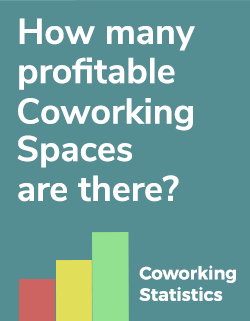With a real estate market still feeling the effects of economic downturn and a city with much un-utilized office space, Amsterdam has designated public funds to develop Broedplaatsen - ‘breeding places’, or incubators. These are working spaces for artistic and creative individuals, and they are popping up in various forms, usually in reclaimed office buildings. The initiators of the projects transform the space and hope to encourage collaboration between the daytime residents.
Anna Heemskerk investigated the actual benefits of working in such a space while writing her master’s thesis at Vrije Universiteit Amsterdam. Her research focused on how proximity spawns collaboration. She focused on a broedplaast in the former headquarters of a daily newspaper, which has been transformed to a shared workspace for 300 small businesses.
With so many like-minded individuals in close proximity, one might suppose that contact and collaboration is inevitable. But what was expected was quite a bit different from what was found.
This particular space put groups with a similar focus together in separate corridors of the building. Artists, graphic designers, and musicians were clustered together, and each company had its own separate office within the corridor. The organizers of the project also included a bar/café on the roof with hope of creating an inviting space for the individuals to mingle.
What Ms. Heemskerk discovered was that most groups within the building were not networking with each other. Most of the tenants had intention and desire to do so, but the structure of the space had not led to an intuitive combining of people. Somehow the 300 companies were not able to collaborate within.
Ms. Heemskerk focused on proximity, and this is what could be considered interesting when dissecting the success of cohabitation in coworking spaces. The few within the broedplaatsen who had managed to collaborate were those who found themselves in the closest proximity, that is, located within a few offices from each other.
When considering collaboration in coworking spaces, this research can be applied to show that proximity matters. Individuals and small companies working in one single room might be expected to interact better than those who are separated by walls, corridors and floors.
The Dutch concept of broedplaatsen is still developing, and also other models were created such as The Beehive, which works like a coworking space and has been running for 5 years. Ms. Heemskerk is now developing a new workspace, Incubator of Amsterdam Center for Entrepreneurship at Science Park, using the lessons learned from her case study. Only time will tell if the new model works, and if so, perhaps coworking spaces will be able to benefit from some of these tools as well.
:::::
Update: Here's a comment about the proximity in a workspace by Alex Hillman. It considers some important views on this topic which have not been part of this study.









